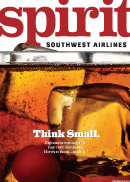When it comes to pitching story ideas to national magazines, “freelance writer” is really just a fancy way of saying “cold caller.” I accept this fact as part of the job, and do not take it personally when an editor sends a cursory “Thanks, but no thanks” or just ignores my pitch altogether. I get it. They didn’t ask me to send an idea, and mine is one of hundreds hopefully lofted into their inbox on any given and already-harried day.
It’s the near-misses that will break the heart. The ones that actually do get a, “Hm, interesting. Can you flesh out the idea and send it back?” It’s like winning the lottery, one of those emails…until the editor opts out in the end. It was almost the right idea, but not quite. Moreover, it was not quite right enough for the editor to massage it into something that IS the right idea. I get that, too, though. Again…hundreds of ideas, looming deadlines, hordes of talented writers.
Recently, though, I got lucky.
I read Media Bistro’s “How to Pitch” guide (I love Media Bistro) for Southwest Airlines’ Spirit magazine and emailed the editor interviewed in that article. I’d pitched Spirit before without success, and thought I’d see if a personal note might help my cause (or, more realistically, completely alienate her).
The editor very kindly sent me some extra insight into pitching the magazine, and eventually I pitched an idea I thought might work. While she didn’t think it fit exactly as it was, she suggested if I tweaked it just a little so it was less feel-good service, more practical business, it could work. She connected me with Spirit’s Associate Editor Noah Bunn, who then embarked with me on a trial-and-error process to get the focus just right.
The result of that much-appreciated partnership, “Cash in on Culture” can be found this month in Southwest seat backs nationwide, and could be read by up to 3.4 million happy flyers. Woo Hoo!



